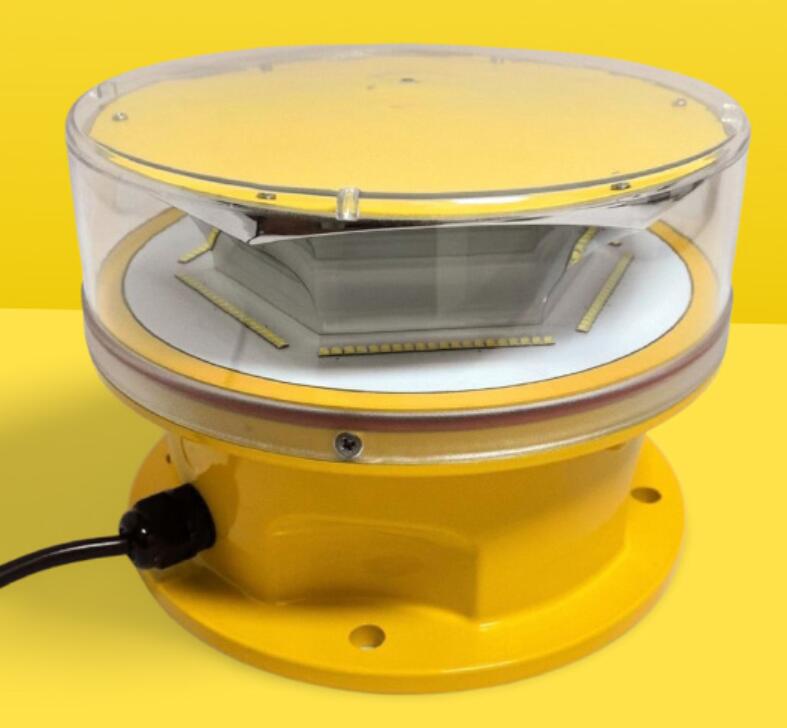Aviation Obstruction Lamp: The Silent Guardian of Modern Airspace Safety
In our increasingly crowded skies, aviation obstruction lamps serve as critical visual sentinels, protecting aircraft from potential collisions with tall structures. These specialized lighting devices have evolved from simple incandescent bulbs to sophisticated LED systems with smart capabilities. As urban landscapes grow vertically and air traffic density increases, aviation obstruction lamps play an indispensable role in maintaining safe navigation corridors for both manned and unmanned aircraft.
The Science Behind Effective Obstruction Lighting
1. Photometric Precision
Optimized light intensity (200-200,000 candela)
Precision-engineered beam distribution patterns
Glare reduction technology for pilot comfort
2. Color Spectrum Engineering
Red light dominance for night-time visibility
White strobe applications for daytime recognition

Chromaticity compliance with ICAO/FAA standards
3. Advanced Synchronization Technology
Wireless networked flash sequences
GPS-time synchronized systems
Grouped structure identification patterns
Global Regulatory Compliance
1. International Standards Framework
ICAO Annex 14 Chapter 6 specifications
Height-based lighting system classifications
Regional implementation variations
| Aviation Obstruction Lamp |
2. Key Regulatory Documents
FAA AC 70/7460-1L requirements
EASA CS-ADR-DSN guidelines
CASA Part 139 (Australia) standards
3. Special Application Mandates
Offshore platform lighting protocols
Temporary construction lighting rules
Wind farm synchronization requirements
Technological Innovations
1. LED Revolution
80% energy efficiency improvement
100,000+ hour operational lifespan
Instant full-intensity illumination
2. Smart System Integration
IoT-enabled performance monitoring
Predictive maintenance algorithms
Remote configuration capabilities
3. Sustainable Power Solutions
Solar-hybrid configurations
Intelligent power management
Extreme weather resilience
Industry-Specific Applications
1. Urban Infrastructure
Skyscraper lighting configurations
Bridge and overpass protection
Construction crane visibility
| Aviation Obstruction Lamps |
2. Renewable Energy Projects
Wind turbine lighting arrays
Solar tower marking systems
Hydroelectric dam illumination
3. Telecommunications
Cell tower lighting solutions
Broadcast antenna protection
Microwave relay station requirements
Installation Best Practices
1. Strategic Positioning
Vertical spacing calculations
Multiple structure coordination
Terrain elevation considerations
2. System Reliability Engineering
Redundant power systems
Surge protection implementation
Lightning arrestor installation
3. Maintenance Protocols
Regular photometric testing
Lens cleaning procedures
Component replacement schedules
Future Development Trends
1. Intelligent Lighting Systems
Aircraft proximity detection
Automated intensity adjustment
Weather-responsive operation
2. Advanced Materials
Self-cleaning nano-coatings
Impact-resistant composites
Temperature-adaptive components
3. Air Traffic Integration
Drone corridor compatibility
Urban air mobility coordination
Enhanced situational awareness
Aviation obstruction lamps have transformed from simple warning devices into sophisticated safety systems that actively contribute to airspace management. As we enter the era of urban air mobility and autonomous flight, these critical components will play an even more vital role in collision prevention.
The next generation of aviation obstruction lamps will likely incorporate Li-Fi communication, AI-powered traffic adaptation, and seamless integration with air traffic control systems. Today's investment in advanced obstruction lighting technology represents both regulatory compliance and a commitment to enabling the safe growth of three-dimensional transportation networks. These essential safety devices continue to evolve, ensuring they remain effective guardians of our increasingly complex airspace.
